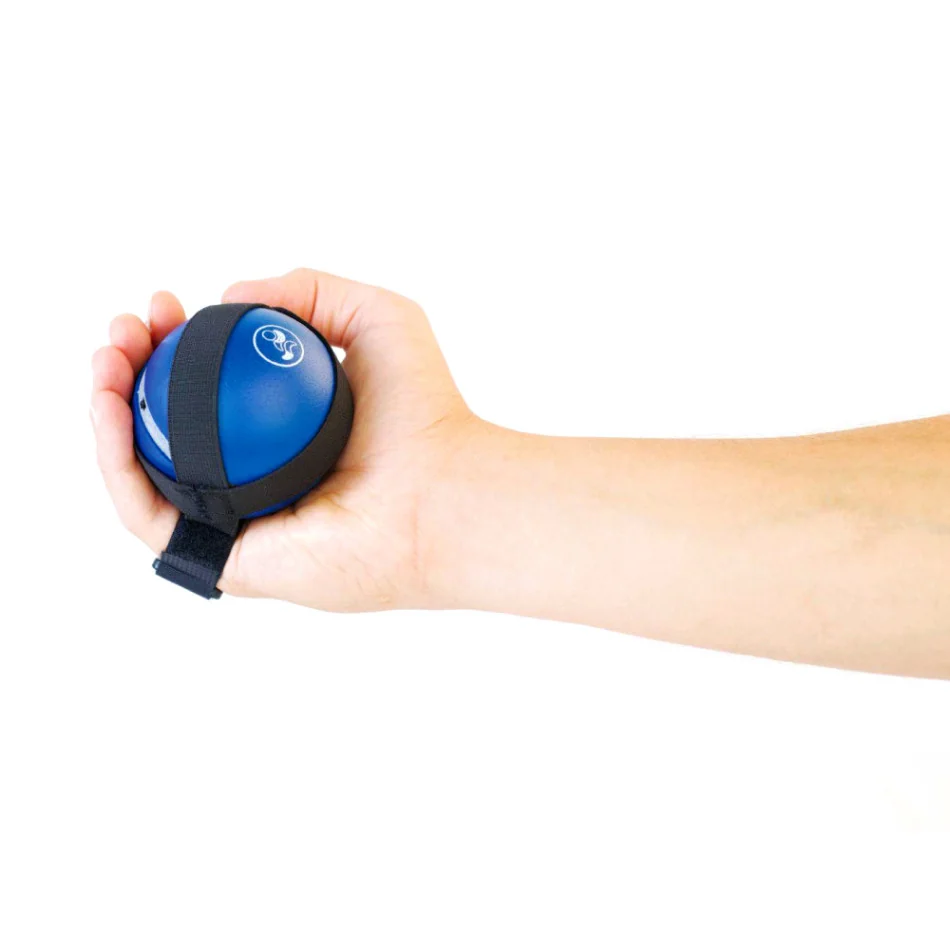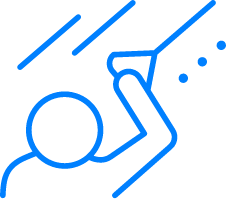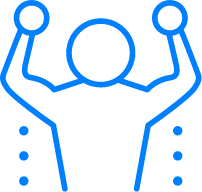
Squeezi is a pressure- and motion-sensitive ball that enables the improvement of upper limb motor skills. The device acts as a motivational movement tool that is designed for use by both children aged 6 and older. Squeezi works with a tablet, which is sold with the device.
The Squeezi device requires the purchase of a lifetime license.
Product photos on the website are for reference only. They may differ slightly from the actual product. Manufacturer hereby reserves the right to change design that would not disturb the principal functionality and safety requirements.
Squeezi - Upper limb rehabilitation device
Squeezi is a pressure- and motion-responsive ball that helps develop upper limb motor skills. It works as a motivational movement tool, suitable for children aged 6 and older. Squeezi can be used with a phone, tablet, computer or TV. It is important to use this device under the supervision of a therapist.
The software is a not disconnected part of the therapy. A dedicated platform provides a central location for training-related insights. This enables quick and easy communication and collaboration. Moreover, the platform allows visualization and analysis of progress.


Features:
A distinctive feature of Squeezi is that the device is equipped with acceleration and geomagnetic sensors responsible for recording the movements performed. Some of the most commonly performed activities include:
Squeezing with the full hand
Squeezing with fingers one at a time
Reorienting the upper body in relation to the game
Moving the upper body according to the rhythm of the music
Moving the Squeezi from point A to point B
Moving the arm or hand away from the body
Moving the arm or hand toward the body
Pronation or supination of the hand
Rotation of the arms, elbows or wrists
It is possible to perform other movements, depending on the chosen game and the creative interpretation of the therapy instructor.
All exercises feature different levels of challenge, so the degree of difficulty can be adjusted to the user's ability. The pressure-sensitive sensor can measure overall squeezing force, as well as individual fingers. Squeezi also allows angles and acceleration to be measured, so patients' ROM can be exercised.
Indications for use of Squeezi
Squeezi is used in both rehabilitation centers, hospitals and inpatient care centers. The device can be used for patients who have musculoskeletal problems, suffer from cerebral palsy or are in a post-stroke condition.
Squeezi allows physiotherapists to create personalized therapy plans based on individual patient needs. In addition, the installed games provide exercise that increases the user's motivation. Moreover, thanks to the database, it is possible to collect and analyze therapeutic data, which allows monitoring the progress made.

Squeezi provides support for upper limb rehabilitation

Fine motor skills of the hands
Squeezi is an innovative device that significantly improves hand motor skills to support patient rehabilitation.

Rehabilitation after stroke
Squeezi supports post-stroke rehabilitation by helping to improve hand motor skills.

Musculoskeletal system
Squeezi supports the musculoskeletal system, helping rehabilitation by strengthening muscles.

Support for seniors
Squeezi is a support for seniors, offering a daily workout that improves hand motor skills.

Core stability
Squeezi supports core stability, helping to strengthen abdominal, back and pelvic muscles during training.

Cerebral palsy
Squeezi supports the rehabilitation of people with cerebral palsy using motor stimulation, which reduces muscle tension.
Online platform to monitor and analyze progress
Record your patients' progress during therapy in the office or remotely. The company's Creative Therapy platform connects to both Matti and Squeezi.


Improved communication
The platform provides a central location for therapy insights, allowing patients to communicate quickly and easily with therapists.

Visualization of progress
The platform allows visualization and analysis of the patient's progress during therapy. It allows therapists to customize and optimize therapy to meet individual patient needs.

Accelerated treatment results
By analyzing the results in real time, the therapist can more quickly adjust the therapy according to the patient's progress, which affects the effectiveness of the therapy.

Motivating patients
Together with the patient, physiotherapists can set clear goals, and visualize results. Progress motivates the patient to keep working, which reduces recovery time.
Update: 24-04-2025, time 18:04
Safety information:
Product compliance details in accordance with Product liability (GPSR)











